Within the visual arts, attempts to understand the pervasively elusive concept of time over centuries past has continued to inform both theoretical writings and artistic practice. The construction of temporalities or different models of time through artworks inherently takes many forms. The current exhibition at Typology Projects, Loose Ends, offers various artistic thoughts on not only the relationship between past and present, but between absence and presence; life and death; and the material and immaterial within, what may be considered, a collection of durational works.
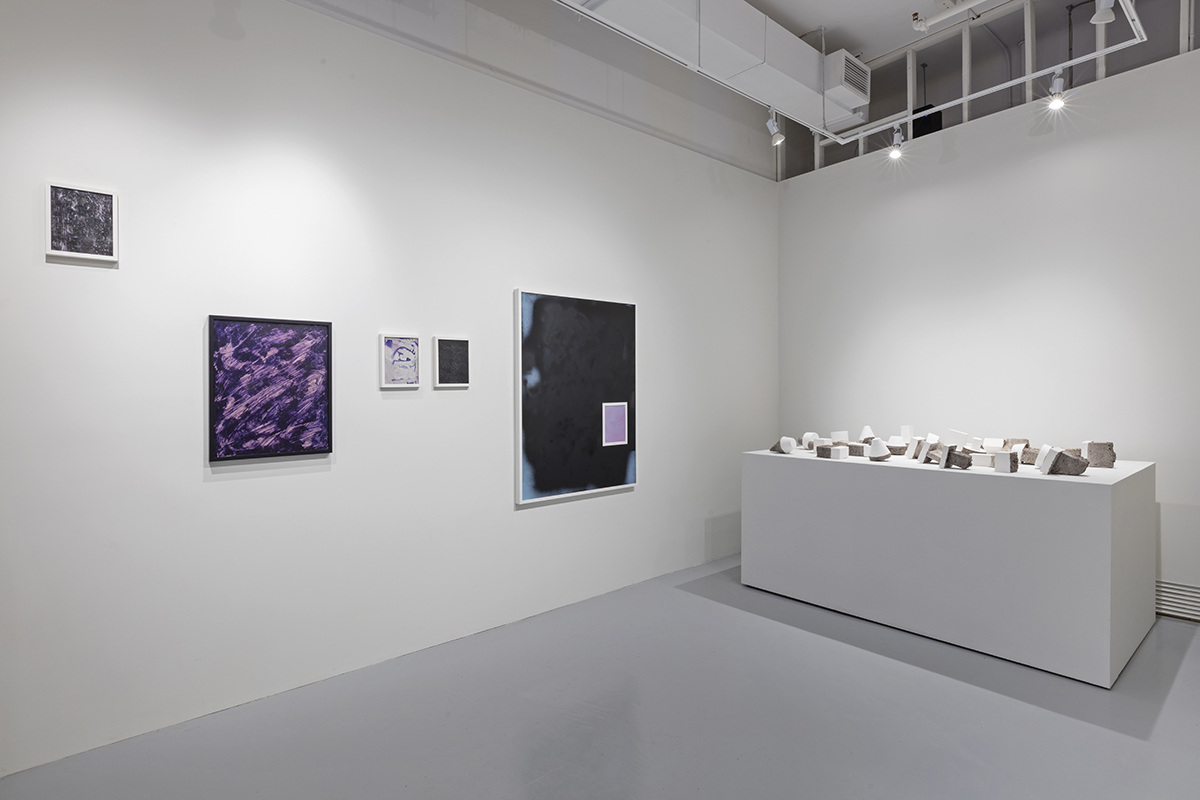 Exhibition views of Loose Ends with works by Jérôme Nadeau (left wall) and Deborah Wang (right)
Exhibition views of Loose Ends with works by Jérôme Nadeau (left wall) and Deborah Wang (right)
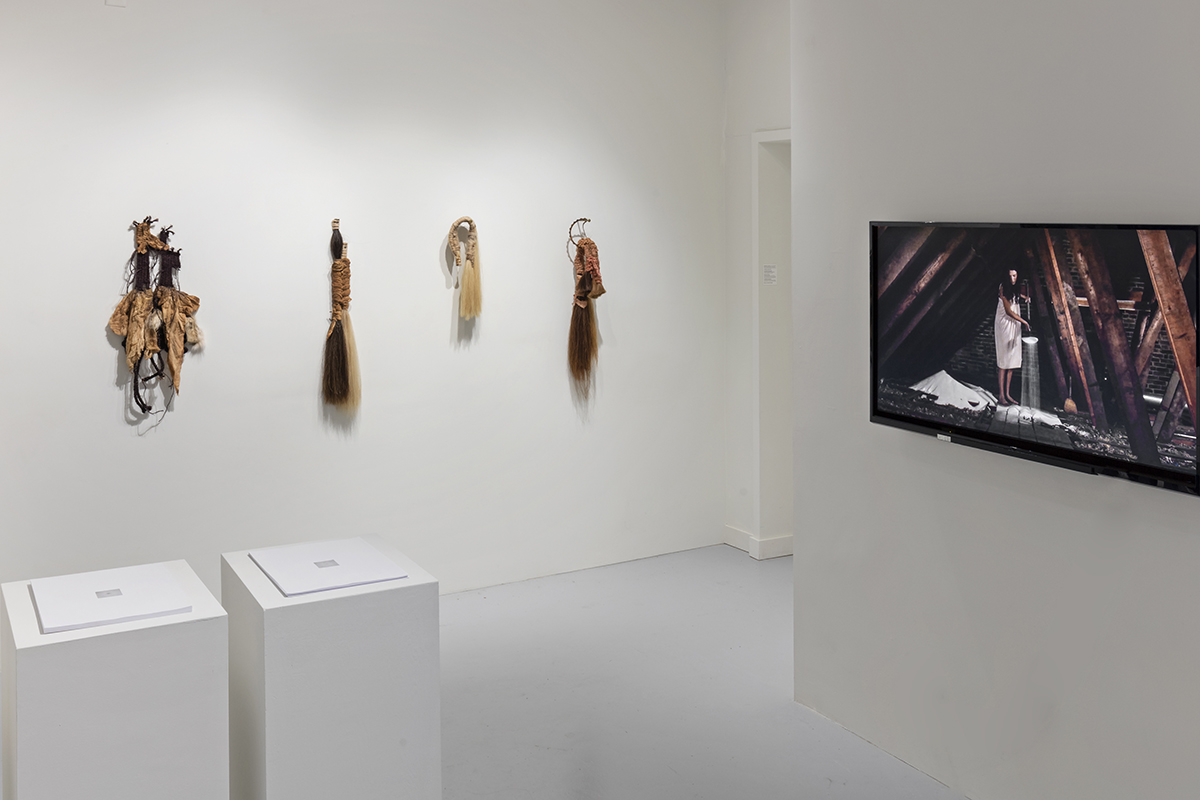 Exhibition views of Loose Ends with works by Mary Grisey (left wall), Faye Mullen (right wall) and Deborah Wang (in front)
Exhibition views of Loose Ends with works by Mary Grisey (left wall), Faye Mullen (right wall) and Deborah Wang (in front)
Curated by Noa Bronstein, Loose Ends features the work of Mary Grisey, Faye Mullen, Jérôme Nadeau and Deborah Wang. I found myself first drawn to Mullen’s three-channel video work, “à jamais”, which over time reveals a narrative that involves the doubling of the artist’s body in the first and final channels. Following this work from left to right, the artist shovels a mineral substance onto the floorboards of what appears to be the attic of an abandoned home, which then trickles down through the porous floors of the house to accumulate in a mound on top of the artist’s doubled body, lying in the cellar. The growing white pile reveals and conceals as it builds and spills around the nude female body, as Mullen steadily holds the gaze of the viewer. The domestic surroundings, which have been clearly marked by the passing of time, form an architectural hourglass over the three levels of the house.
 Faye Mullen, à jamais, 2011
, stills from a three-channel HD video installation,
52 minute loop, edition of 3
Faye Mullen, à jamais, 2011
, stills from a three-channel HD video installation,
52 minute loop, edition of 3
While at first glance I assumed the artist was labouring over mounds of white sand, maybe even the sands of time, it is in fact salt. Salt has a rich history as a religious and social symbol, and may be employed for its connections to death or funerary rites or for purifying rituals. In the curatorial essay for Loose Ends, Bronstein more specifically cites both Gaelic and Japanese funerary traditions which involve the carrying of salt, contributing to the mineral’s association with loss. Salt is similarly central to Deborah Wang’s “Drip”, a series of 100 photographic prints which record the subtle incremental dripping of water onto a bed of salt. The work has a durational or even performative aspect, as each day one print is moved from the first pile to the adjacent (second) pile. Both Wang and Mullen’s work seem propose the possibility of the work of art as time keeper.
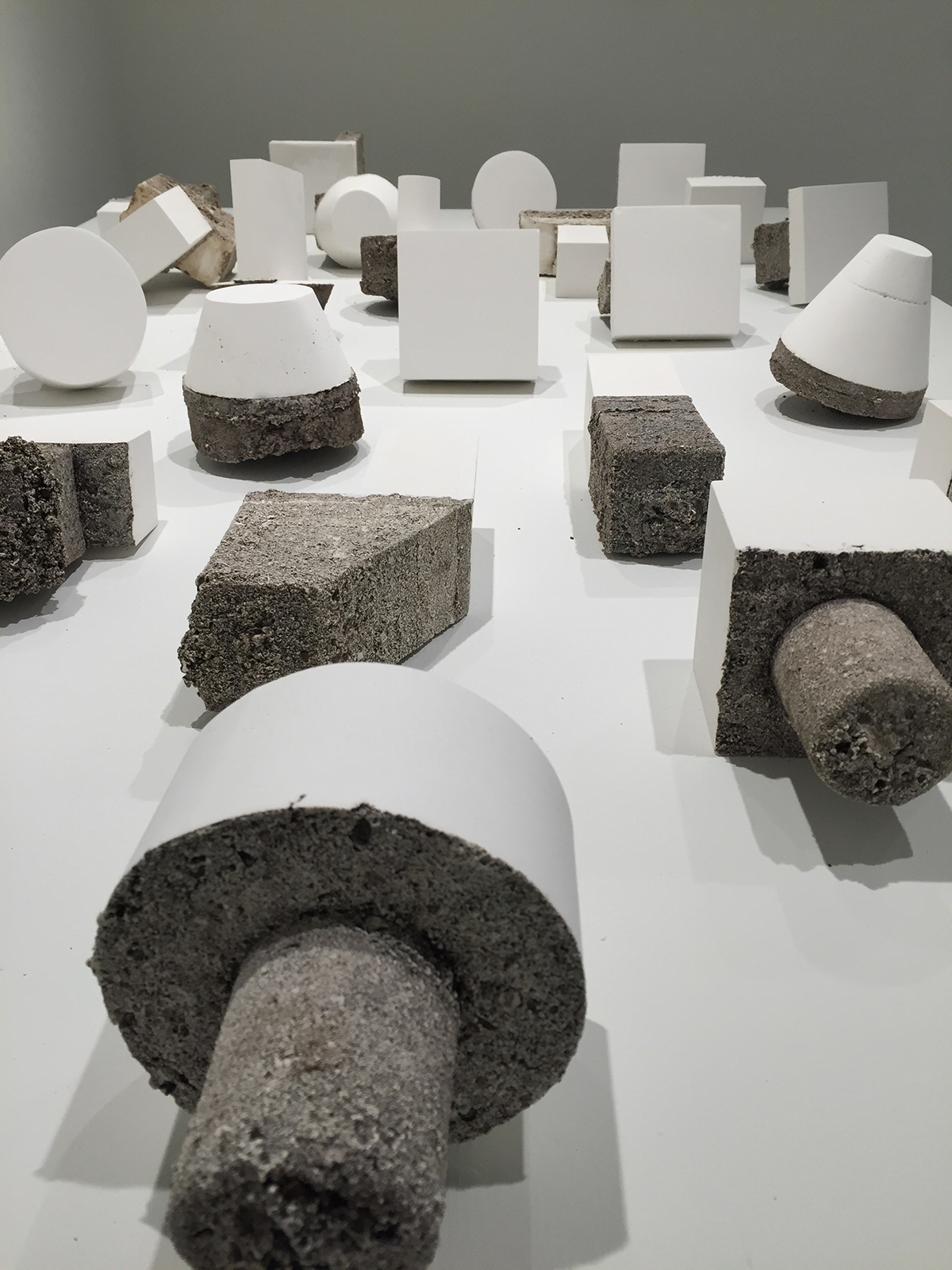 Deborah Wang, Earth Plugs, 2014, series of 29 white gypsum cement sculptures, dimensions variable
Deborah Wang, Earth Plugs, 2014, series of 29 white gypsum cement sculptures, dimensions variable
Jérôme Nadeau’s painterly photographic experiments extract inks and dyes from a chromogenic paper print which is then applied onto undeveloped Fujicolour Chrystal Archive Paper. These colourful works remain unfixed, and will transform over time as the surface is exposed to light. A photograph is often framed as an indexical trace of a moment firmly rooted in the past, however these works are constantly undergoing metamorphoses as a record of the perpetually passing present, hovering in a state of impermanence and transience.
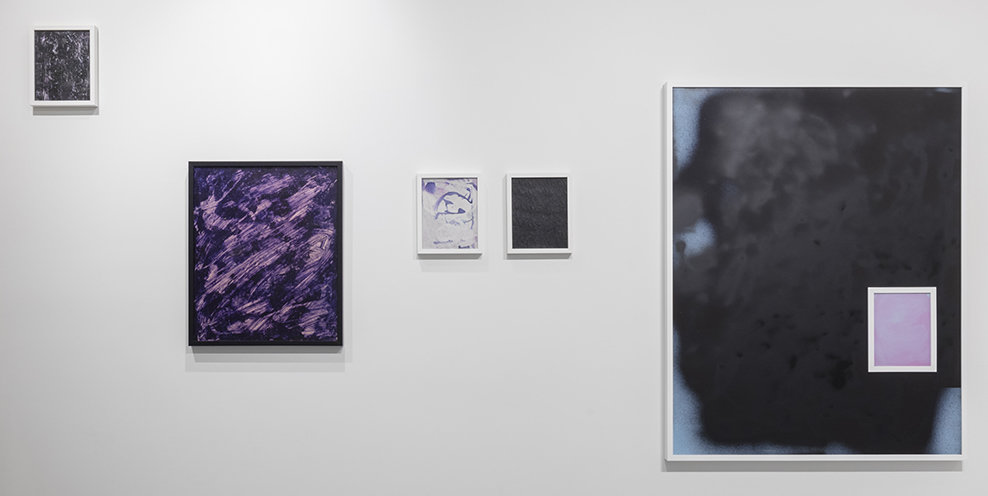 Jérôme Nadeau’s work (from left to right): HGSOT, 2013,
Chromogenic dyes on unprocessed Fujicolor Crystal Archive paper
, 10″ x 8″; Unabeling Inabilities, 2015
Epson Ultrachrome K3 ink on unprocessed Kodak Endura paper,
24″ x 20″; Ruins, 2014
, Chromogenic dyes on unprocessed Fujicolor Crystal Archive paper,
10″ x 8″; Everever, 2013,
acrylic and enamel on unprocessed Fujicolor Crystal Archive paper,
10″ x 8″; Finest Fouls, 2016,
Enamel on archival chromogenic print, acrylic on unprocessed Fujicolor
Crystal Archive paper,
50″ x 40″
Jérôme Nadeau’s work (from left to right): HGSOT, 2013,
Chromogenic dyes on unprocessed Fujicolor Crystal Archive paper
, 10″ x 8″; Unabeling Inabilities, 2015
Epson Ultrachrome K3 ink on unprocessed Kodak Endura paper,
24″ x 20″; Ruins, 2014
, Chromogenic dyes on unprocessed Fujicolor Crystal Archive paper,
10″ x 8″; Everever, 2013,
acrylic and enamel on unprocessed Fujicolor Crystal Archive paper,
10″ x 8″; Finest Fouls, 2016,
Enamel on archival chromogenic print, acrylic on unprocessed Fujicolor
Crystal Archive paper,
50″ x 40″
There is a subtle relationship between Nadeau’s works as they hang next to Mullen’s video work – the manipulation of the photographic surface is characterized by indexical marks that have recorded bodily gestures, similar to those enacted by Mullen in the moving of salt. While these works make subtle references to the traces left by the absent body, Grisey’s sculptures seem to more explicitly evoke the body through the use of material – the braiding and weaving of horse-hair, hand dyed cheesecloth, unspun wool and latex are fleshy and bodily. “Remains of the Ephemeral” could be connected to the traditions of Victorian era hair wreaths, as decorative memorial objects which use the hair of the dead to render death and absence visible.
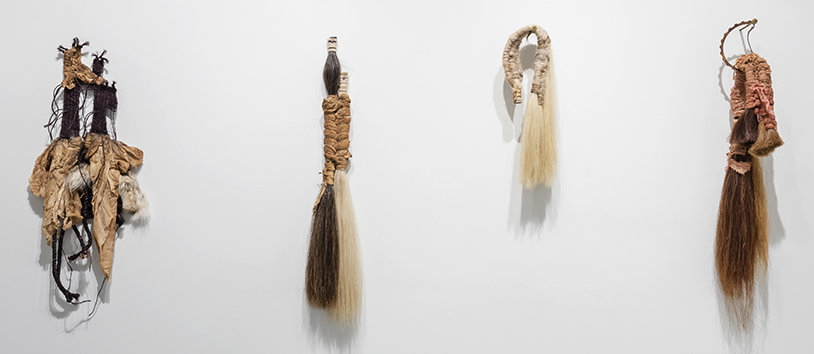 Mary Grisey (from left to right), Remains of the Ephemeral I, 2014,
hand-dyed cheesecloth and sisal, coyote fur, and rubber latex, 24″ x 6″; Remains of the Ephemeral II, 2014
, horsehair, hand-dyed cheesecloth, and rubber latex
, 30″ x 5″; Remains of the Ephemeral III, 2014
, horsehair and hand-dyed unspun wool,
22″ x 6″; Remains of the Ephemeral IV, 2014
, horsehair, hand-dyed raw silk and cotton, rubber latex, and rusted steel,
32″ x 6″
Mary Grisey (from left to right), Remains of the Ephemeral I, 2014,
hand-dyed cheesecloth and sisal, coyote fur, and rubber latex, 24″ x 6″; Remains of the Ephemeral II, 2014
, horsehair, hand-dyed cheesecloth, and rubber latex
, 30″ x 5″; Remains of the Ephemeral III, 2014
, horsehair and hand-dyed unspun wool,
22″ x 6″; Remains of the Ephemeral IV, 2014
, horsehair, hand-dyed raw silk and cotton, rubber latex, and rusted steel,
32″ x 6″
Katie Lawson
Images are courtesy of Typology Projects
*Exhibition information: January 14 – March 6, 2016, Typology Projects, No. 302 — Artscape Youngplace, 180 Shaw Street, Toronto. Gallery hours: Fri –Sun, 12 – 5 pm.

